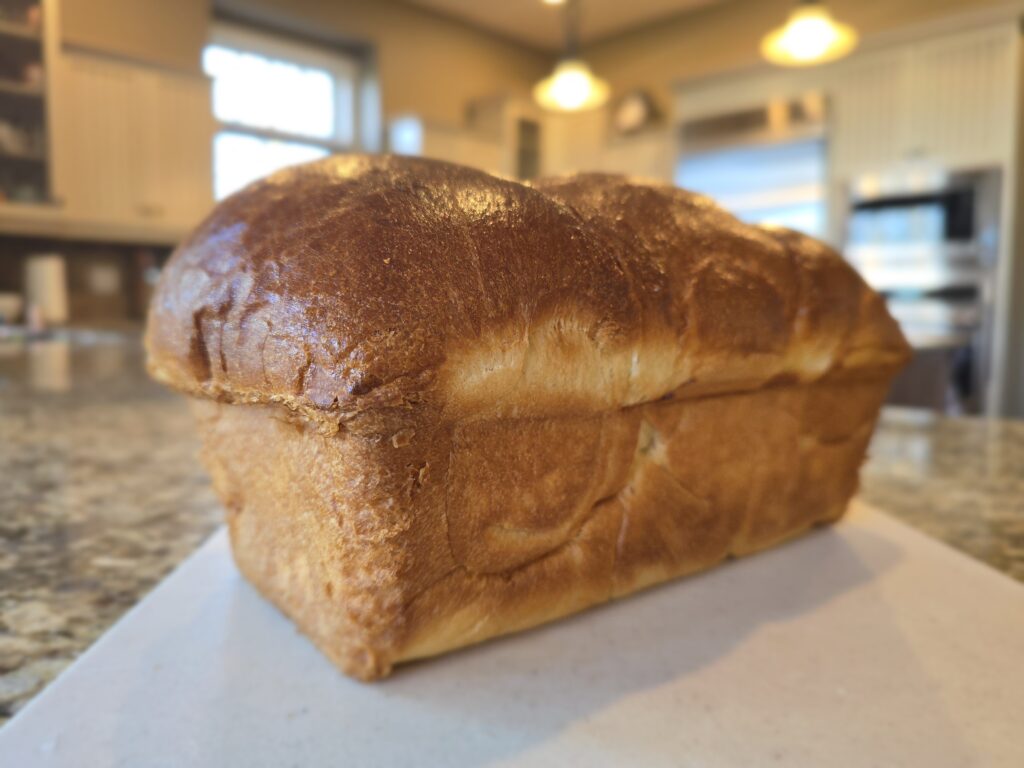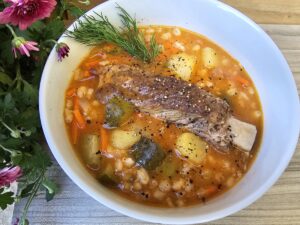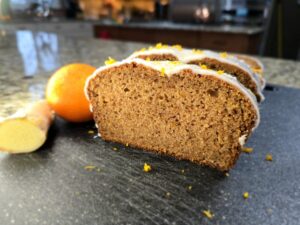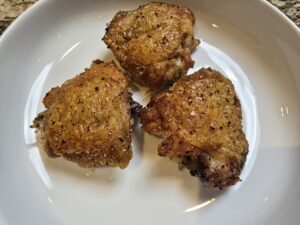A Japanese-style milk bread made with the Tangzhong method for perfect structure and pillowy softness
When I say this loaf disappeared in one day, I’m not exaggerating. I pulled it out of the oven, and within an hour, it was gone — devoured by my kids and husband while it was still warm and steamy. They were in awe at how soft, tender, and bakery-like it tasted.
This is what you want from a loaf of Hokkaido Milk Bread — also known as Shokupan, Japanese Milk Bread, or even Tangzhong Bread. It’s a soft, enriched white bread made with a roux starter that allows the dough to hold extra moisture, giving it a unique pull-apart texture and an almost cottony crumb.
I’ve tested this recipe extensively to get the balance just right — not too heavy, not too wet, and baked to the exact internal temperature that gives you structure without drying the bread out. This is the Food400-approved version, and it’s here to stay.
What Makes Hokkaido Milk Bread So Special?
Unlike standard sandwich loaves, this style of Japanese milk bread uses a cooked flour-water mixture called tangzhong. It pre-gelatinizes the starches, letting the dough hold more liquid without collapsing or becoming soggy. The result is a bread that’s incredibly soft yet slices cleanly — ideal for toast, sandwiches, or just tearing apart and eating warm.
In Japan, this style is often called Shokupan (食パン) — “eating bread” — and it’s a staple of Japanese bakeries. Depending on how you shape it, you can also make it as a square Pullman loaf, tall toast bread, or dinner rolls.
Structurally Set vs. Extra Moist — How to Bake It Right
I’ve tested internal baking temps between 195°F and 204°F. Here’s what I learned:
- 195°F (91°C): Maximum moistness. Best if you plan to eat it same day.
- 200–203°F (93–95°C): Slightly drier but with a stronger structure. Perfect for slicing and storing.
I baked mine to 203°F and it was stunning — soft, springy, and sliceable the next morning without any gumminess.
Serving Ideas
This is a flexible loaf that works in so many ways:
- As a breakfast toast with salted butter and jam
- Used in egg salad sandwiches, Japanese-style
- Sliced thick and turned into milk toast or French toast
- Or just eaten warm, plain, like we did — with no regrets
Keywords & Variations You’ll See
This recipe also goes by:
- Japanese Milk Bread
- Shokupan (食パン)
- Tangzhong Bread
- Japanese Pullman Loaf
- Soft Asian White Bread
They’re all variations of the same enriched dough, sometimes shaped differently or branded by region. This one uses my go-to method that balances texture, moisture, and clean slicing.

Hokkaido Milk Bread (Fluffy Japanese Milk Loaf)
Ingredients
- Tangzhong (Roux Starter):
¼ cup (32g) bread flour
¼ cup (60g) whole milk
¼ cup (60g) water
- Dough:
2½ cups (360g) bread flour
(I use 340g to start with, for softer dough, however, tend to add more if the dough is too sticky — adjust between 340–360g as needed)¼ cup (50g) granulated sugar
2¼ tsp (7g) instant or quick-rise yeast
2 tbsp (15g) dry milk powder (full fat, optional but recommended)
Scant 1 tsp (5g) fine salt
½ cup (120g) whole milk, room temperature
1 large egg, lightly beaten
¼ cup (56g) unsalted butter, softened
- For Egg wash:
1 egg + 1 tbsp cream (for glossy egg wash)
Directions
- Make the Tangzhong Starter
In a small saucepan, whisk together flour, milk, and water until smooth. Cook over medium heat, stirring constantly until it thickens into a smooth paste (about 2–3 minutes). Let cool to room temperature. - Make the Dough
In a stand mixer bowl, combine:
Bread flour, sugar, yeast, dry milk powder, and salt.
Add the cooled tangzhong, milk, and egg.
Mix on low speed for 5 minutes until a shaggy dough forms. - Add Butter & Knead
Add softened butter 1 tbsp at a time, mixing for 5 more minutes on medium speed (Speed 4). Continue kneading until dough is glossy, smooth, and stretches easily without tearing — about 10–12 minutes total kneading time.
If the dough is very sticky and not forming a ball, add more flour 1 tbsp at a time (up to 360g total). - First Proof (Bulk Rise)
Shape dough into a ball and place in a greased bowl.
Cover tightly with plastic wrap.
Place in a warmed oven (preheat to 175°F, then turn off).
Let rise for 45 to 75 minutes, or until doubled and puffy. - Shaping
Turn out dough and gently press out air.
Divide into 3 equal pieces.
Flatten each into a rectangle, fold the long edges toward the center, and roll tightly into logs.
Place logs seam-side down into a greased 9x4" loaf pan. - Second Proof
Cover the pan with plastic wrap and place in a turned-off warm oven again.
Let rise for 45 to 55 minutes, until the dough has domed above the rim and springs back slowly when touched. - Baking
Preheat oven to 350°F (180°C).
Brush loaf gently with egg + cream wash.
Bake for 20–23 minutes, checking around 20 minutes.
Internal temperature should reach at least 195°F (91°C) for a moist, perfectly baked crumb.
I baked my loaf to 203°F for about 20–21 minutes.
195°F internal temp gives you max moistness.
But 200–203°F gives a loaf that’s more structurally set and less prone to collapse, compressing, or becoming soggy, especially if you plan to store or slice cleanly. - Cooling
Cool in the pan for 5 minutes.
Remove and cool completely on a wire rack before slicing.
Best enjoyed within 2 days or frozen for longer storage.
Notes
- A soft, slightly sweet, enriched bread using the tangzhong method for a tender, cloud-like crumb.











